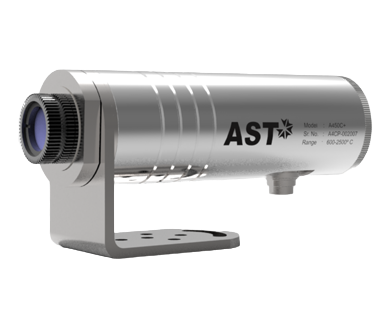Temperature control is crucial in many industrial processes, and a pyrometer is one of the most effective temperature measurement devices in every industry. This article will explore a pyrometer and how it helps with industrial production. We'll also look at some of the advantages a pyrometer brings to an industrial setting and discuss how you can make the most of this valuable tool. Let's get started!
Introduction to Pyrometer
A pyrometer is a device that measures the temperature of an object. It is commonly used in industrial applications to measure the temperature of materials during production processes. Pyrometers can measure the temperature of both solid and liquid materials.
Pyrometers are typically composed of two main components: a sensing element and a display unit. The sensing element is responsible for detecting the temperature of the object. The display unit then displays the temperature measurement on a readable display.
Many types of pyrometers are available on the market, each designed for specific applications. Some common types of pyrometers include infrared, contact, and optical. Every kind of pyrometer has advantages and disadvantages when choosing a pyrometer for an application.
Infrared pyrometers are one of the most commonly used types of pyrometers. They work by measuring the infrared radiation emitted by an object. Infrared pyrometers are typically more accurate than other types and can measure temperatures over long distances. However, they can be expensive and require careful calibration.
Contact pyrometers work by physically touching the object with a sensor. This type of pyrometer is typically less accurate than other types but is much easier to use and does not require as much calibration.
What is a Pyrometer?
A pyrometer is a device that measures the temperature of an object by measuring the number of infrared radiation it emits. It is often used in industrial settings to measure the temperature of hot objects, such as molten metal or furnace walls.
How does a pyrometer work?
The principle behind a pyrometer is fairly simple. All objects emit infrared radiation, invisible to the human eye but detected by special sensors. The number of infrared radiation emitted by an object increases as its temperature increases. Therefore, measuring the amount of infrared radiation emitted by an object makes it possible to determine its temperature.
Most pyrometers use two sensors: a background sensor and a target sensor. The background sensor measures the level of infrared radiation in the surrounding environment. The target sensor then measures the level of infrared radiation from the object being measured. The pyrometer can calculate the object's temperature by subtracting the two readings.
Pyrometers are available in both handheld and fixed-mount versions. Handheld pyrometers are typically used for measuring the temperatures of small objects, while fixed-mount pyrometers are designed for larger objects, such as furnace walls.
Types of Pyrometers
A few different types of pyrometers commonly use in industrial production settings. The most common type is the optical pyrometer, which uses a sensor to measure the intensity of light emitted from a hot object. This type of pyrometer use to measure the temperature of objects that are too hot to touch, such as furnace walls or metal ingots. Another type of pyrometer is the infrared pyrometer, which uses an infrared sensor to measure the amount of heat radiated by an object. This type of pyrometer use to measure the temperature of both hot and cold objects, making it ideal for measuring the temperature of moving objects like conveyor belts.
Benefits of Using a Pyrometer
There are many benefits of using a pyrometer in industrial production. Here are just a few of the advantages:
1. A pyrometer can help you measure high temperatures accurately and quickly. It is important to ensure that your production process runs smoothly and efficiently.
2. A pyrometer can also help you monitor your production process over time. This information use to make adjustments to improve efficiency or address problems.
3. Pyrometers are relatively low cost, making them a very affordable option for industrial production monitoring.
4. Pyrometers are easy to use and require minimal training, making them ideal for busy production environments.
5. Pyrometers are rugged and durable, designed to withstand the harsh conditions in many industrial settings.
Applications in Different Industries
Pyrometers find a variety of applications in different industries. In the steel industry, they are using for measuring the temperature of molten steel and castings. In the glass industry, they use for measuring the temperature of furnaces and batch melting operations. In the petrochemical industry, pyrometers using for measuring the temperature of crude oil, natural gas, and refining operations.
Factors to Consider When Purchasing a Pyrometer
There are a few elements to consider when purchasing a pyrometer for industrial production. The first is the temperature range that the pyrometer can measure. It is essential to ensure that the pyrometer can measure the temperatures needed for the specific application. The second factor to consider is the accuracy of the measurement. The third factor to consider is the response time of the pyrometer. It is essential because it determines how quickly the pyrometer can take a reading and provide accurate results.
Conclusion
This article shows that a pyrometer is an essential tool for monitoring and controlling temperatures in industrial processes. Measuring the temperature of objects with great accuracy helps ensure that products are made safely and effectively. With its ability to measure both high and low temperatures quickly and accurately, the pyrometer has become indispensable in many industries worldwide. It is clear why it has become such an important part of modern production - its versatility allows for efficient operation at any scale.





Comments